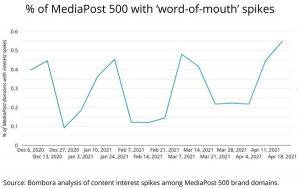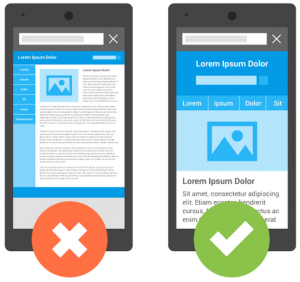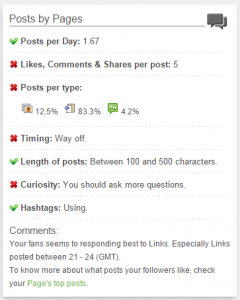Engagement on Twitter is like a cocktail party discussion. We want an audience, and we try to provide valuable messages and content to get people hooked.
Compelling and relevant content will help you attract more customers to your website and keep them engaged with your brand. Your followers are more likely to respond to the tweets that are relevant to them.
This brings us to the need for Twitter marketing. From generating ideas to promoting on Twitter for free or paid, there are numerous things you could do to ensure that it fits well into your content strategy.
This guide will highlight Twitter as one of your vital tools in your content marketing strategy and how to ensure that more people engage with your content to help you achieve your content marketing goals.
8 steps to incorporate Twitter in your content strategy
Step #1: Set objectives for Twitter marketing

It’s important to decide what you want to achieve before planning your strategy. If you want to get more people to view your content, your objectives should include some of the following:
- Generate leads from Twitter by getting followers to visit your landing page.
- Build awareness for a new product or service by using Twitter to market it to relevant prospects.
- Build a positive opinion about your brand, products, or services, by using Twitter as a PR tool.
- Build a community of like-minded people to give you ideas to innovate a product, service, or overall marketing strategy.
- Provide customer support through valuable content and one-on-one conversations that help customers get the most out of your product or service.
- Build thought leadership, engage with industry influencers and like-minded people, and share your opinions.
Step #2: Decide where Twitter fits into your content strategy
Your Twitter plan will hold its own unique identity within your content marketing strategy. For example, some things your Twitter strategy might drive within a larger plan are:
- Traffic: You could be using Twitter to drive traffic to your blog, and use direct links to the posts and landing pages.
- Conversions: You could be using Twitter for integrated messaging, where you’re looking for a certain action such as a signup, subscription, or enrollment.
- Sales: Where any type of Twitter, whether video, images, or blog posts, have only one motive: to increase sales.
Step #3: Identify your target audience on Twitter
Targeting your audience on Twitter is quite a task but also quite crucial. However, there are so many ways to find it, making it easier to connect with targeted followers to promote your content to.
You can even build Twitter lists for each segment of your audience to keep track of who likes which content. Here’s how you can build targeted lists of people to engage with:
- Search for keywords in bios: Use a tool like SocialBro (paid) or Followerwonk (free) to search for users with your content’s target keywords in their bios. You could also search by location.
- Look at hashtags: Use industry relevant hashtags and browse through their streams to find other people using them. A brainstorming session will lead you to find the best hashtags for your marketing goals.
- Follow and engage: Use Twitter list tools like Hootsuite or Tweetdeck to import your Twitter lists into the columns. This will make it easier to follow your lists and build relationships with their members.
Step #4: Determine the best times to tweet
Obviously not everyone is online (let alone on Twitter) 24/7. You need to figure out when your own followers are online – and that’s when you tweet.
Some things to consider are where you’re located, whether your followers are on Twitter during the day or at night, etc.
Here’s how you can determine the best times to tweet for the most engagement:
- SocialBro: It analyzes the timelines of your followers and generates a report that will show you when you should be tweeting to reach them.
- Hootsuite Autoschedule: If you use Hootsuite, this feature will already know which times of day your tweets get the most engagement during.
- Tweriod: Tweriod will run an analysis of your followers and show you when they’re online, as well as the best times for you to tweet. You can even import those times into your Buffer schedule.
Step #5: Get content ideas

For many content marketers, Twitter is their favorite destination to get some of their best topic ideas.
If you need to brainstorm your next blog post or ebook topic, try these strategies:
- Enter keywords: Enter the most relevant keywords in your industry and check out what’s being talked about. There could be numerous discussions, articles, event announcements, and more happening under your nose. These will tell you what’s trending, what your target audience needs, what influencers are speaking about, and more.
- Follow your network: Your followers are tweeting about your industry, and they could give you some valuable ideas. For example, if you see people asking a lot of questions about a certain strategy, you could write a tutorial about it.
- Look out for pain points: Your prospects have questions and problems. They might be trying to engage on Twitter to get solutions. Keep a pulse on what’s happening to know what questions to answer.
Step #6: Monitor your competitors’ tweets
Twitter is one of the most popular networks for brands, which makes it easy to see what your competition is doing. Simply monitor their accounts to see what’s working for them.
- Follow your competitors: You don’t even technically need to follow them. Make a private list that will be visible only to you. Add your competitors. You could also include all the employees if the competitor has more than one primary account.
- Monitor their engagement: Know what people are saying about your competitors, as well as how they’re responding.
- Look at the articles they share: If competitors are creating a lot of content, this will help you see how they’re marketing it and how it’s received by their audience.
Step #7: Choose what you share
You should share a variety of content on Twitter – not just text. The network supports a lot of different media formats that can be embedded right in your tweet, including:
- Text: This short, sweet, and simple type of tweet is great for updates, news, quick facts, and asking your audience questions.
- Photos: Enhance your message with a picture that will put an impact to your tweet. Photos stand out more, getting more impressions and more engagements on your content.
- Video: If a picture’s worth a thousand words, a video would speak millions. Videos, if integrated into your message, could work wonders to put your message in front of the right audience. Embed short but informational and entertaining videos for your followers.
- Slideshares: Slideshare is a boon for visual information, but why keep the presentations on one platform? With slide decks, you can present a ton of content in an easy to digest way.
- Links: If you have a valuable piece of content that lives elsewhere and can’t be embedded, a regular link will do. Add a hashtag to boost its reach, and give a clear idea of what the link is leading to.
Step #8: Promoting your content

If Twitter is used well, it can drive tons of traffic to your website. However, simply tweeting the title of the blog post with a link back to your website every time isn’t going to work.
You need to be creative when crafting tweets to promote your blog posts, videos, and other content. Here are some ways to get more clicks on your tweets:
- Keep it short: Tweets that are 100 characters or less tend to get higher conversions. When you’re promoting a link, just write a brief intro – enough that the reader knows what to expect when they click through.
- Quote your post: Try using a teaser from your post. The quote needs to be precise and give a good idea of what the post is about.
- Include statistics: People love facts and figures. Use stats that support the arguments you’re making in your content. This adds validity to your ideas.
- Leverage #hashtags: Hashtags are a great way to reach members of your industry who don’t follow you (yet). Use common industry ones to do that. You can also use branded hashtags and encourage others to use it.
- Use @mentions: If your post mentions any publications, industry influencers, etc., make sure to mention them in your promotions. They’ll be flattered and there’s a good chance they’ll share it too, so you’ll reach their whole audience.
- Ask for a share: This is a good practice to get your tweets retweeted. Simply ask the viewers of your tweet to retweet the post. Tweets that ask for RTs are pretty likely to get them.
- Promote your tweets: Want even more exposure than what you’re getting from everything above? Promoted tweets will get it, with just a small investment. They’re easy to create and can bring you a lot of traffic.
Conclusion
Twitter is a powerhouse of opportunities for every stage of your content strategy. There’s a reason so many companies invest most of their social resources there.
You could use these suggestions to implement Twitter as the only content marketing tool from top to bottom, except for your blog. Is your presence there strong enough to take that plunge?
Digital & Social Articles on Business 2 Community
(53)









